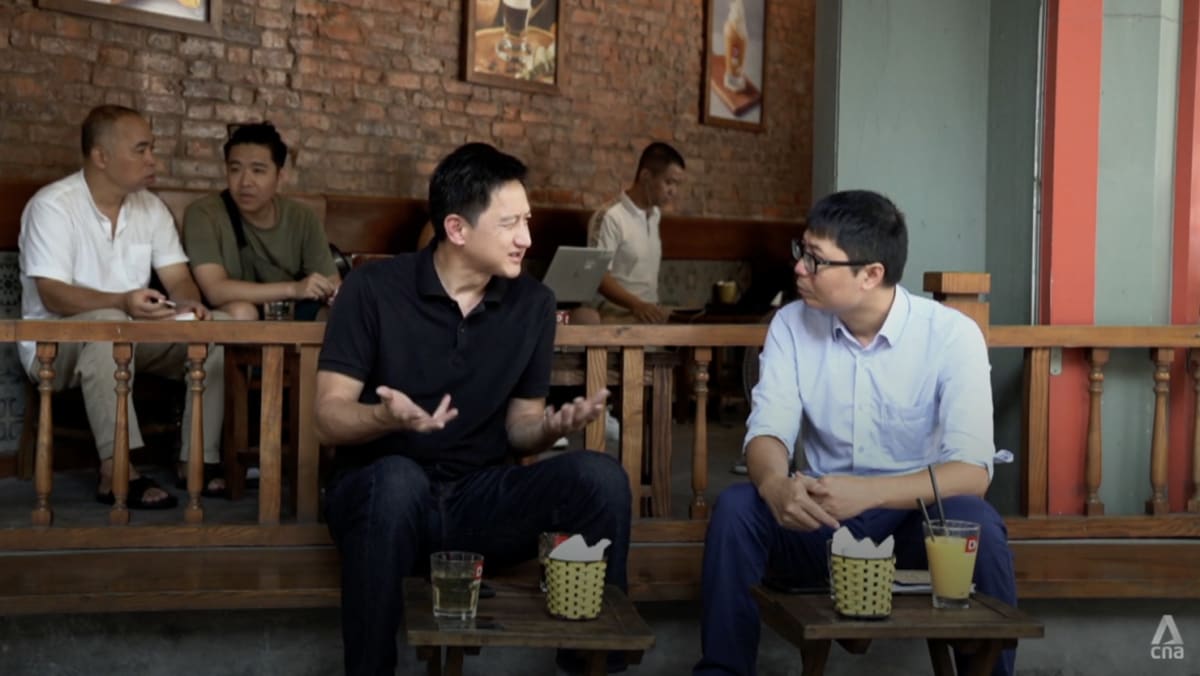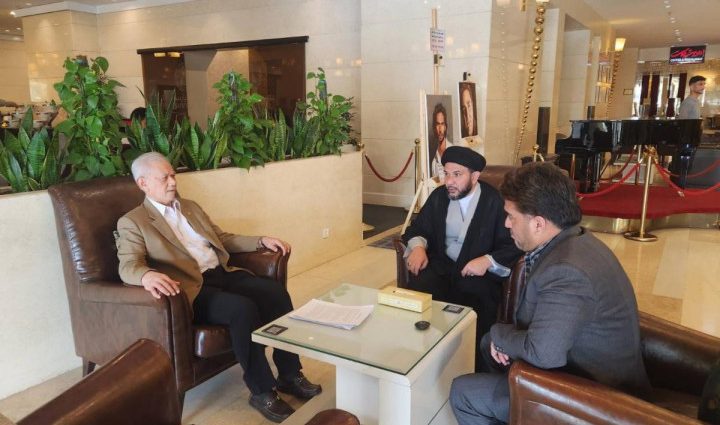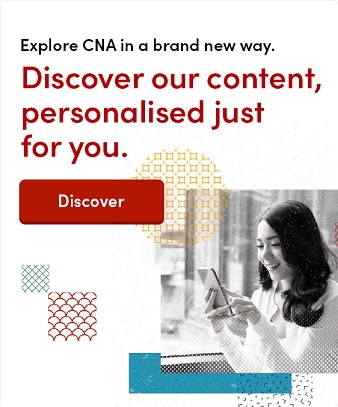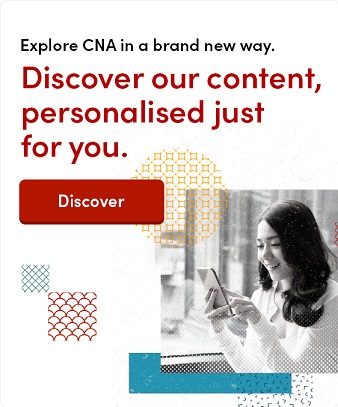‘Hamas ready to free all Thais’
Wan’s hostage talks a success, Iran rep says

Recent negotiations with Iran have gone smoothly, with the Palestinian militant group Hamas poised to release all Thai hostages immediately, according to Saiyid Sulaiman Husaini, leader of an association of Shia Muslims in Thailand.
Mr Husaini provided an update on Friday on the progress of the negotiations, saying the team formed by House Speaker Wan Muhamad Noor Matha arrived in Tehran and launched into talks with Hamas at 10am local time on Friday.
The team is being led by former Narathiwat MP Areepen Uttarasin and Lerpong Syed, Mr Husaini’s brother.
The majority of Iranians are Shia Muslims, whereas most Palestinians and Hamas militants are Sunnis.
Iran is believed to be supporting Hamas with funds, weapons and training in its ongoing war with Israel.
Mr Husaini reportedly has a strong reputation and wields considerable influence among Shia Muslims both in Thailand and in neighbouring countries.
“(Friday) morning, the negotiations went smoothly. But details cannot be disclosed until the negotiation is concluded,” Mr Husaini wrote.
“Hamas has given a signal to Thai representatives that it will release Thai hostages immediately when the situation is safe as they claimed that Israel is attacking all sides of the Gaza Strip (in a bid to) to sacrifice foreign hostages to discredit Hamas.”
Khampee Disthakorn, a spokesman for the House speaker, said Mr Wan was negotiating with parties on all sides of the Israel-Hamas conflict, regardless of their religion, to help release all of the Thai hostages.
His scheduled visit to Saudi Arabia next Friday has now been postponed, however, after the Saudi government said it is not ready to welcome guests amid the ongoing war.
Separately, Prime Minister Srettha Thavisin refuted a report on Friday claiming that 54 Thai nationals are among the 220 hostages being held in the Gaza Strip.
“I have checked and verified the situation with our Thai ambassador in Israel, as well as with security agencies, and they confirm that 18 Thais are being held. The number 54 may be the result of some sort of confusion,” he said.
Reuters quoted the Israeli government mid-week as saying the number was 54.
Mr Srettha also referred to the issue of Thai workers whose salaries have not been paid and who wish to return home.
He said he had spoken to Orna Sagiv, Israel’s ambassador to Thailand, and the salaries will be paid as soon as they leave the country.
Meanwhile, Foreign Ministry spokesperson Kanchana Patarachoke said the current Thai death toll from the conflict stands at 33, with 18 others injured and the same number held hostage.
So far, the remains of 15 Thais have been returned to the kingdom, she said, adding that 4,771 Thais have returned to Thailand on 23 government-sponsored flights.
At least 40 Thais who enrolled to study at the Arava International Centre for Agriculture Training in Israel have returned to Thailand, while 75 others wish to remain in the country, she said.
She advised those who are staying there to make safety their top priority, recommending they return home first and reconsider their options.
Labour Minister Phiphat Ratchakitprakarn said the ministry would not send Thai workers to resume their jobs in Israel until the war has ended.
Mr Phiphat urged Thai workers to enjoy some rest with their families in their home provinces while the Employment Department negotiates with Israel on how to allow them to resume working there once the situation returns to normal.
Israel has decided to extend for another year the work permits of those whose contracts have ended, Mr Phiphat said.
The ministry is also in talks with South Korea and other countries in Europe, as well as Australia, to see if they have demand for Thai workers with expertise in agriculture, he said.
Some countries have already informed Thailand that they wish to recruit Thai workers for fruit picking or farm jobs, he added.
Mr Phiphat said the ministry will compensate Thai returnees from Israel to the tune of 15,000 baht each. It will seek a bigger budget from the cabinet next week, he added.
âCountryside houseâ: Michelin-starred Restaurant JAG moves to bigger, brighter space at Robertson Quay

Gone are the starched tablecloths and upholstered chairs – the new JAG is a much homier space. “To celebrate vegetables, we wanted to build something that feels like a garden house – wood, rattan, greenery, natural light, with a touch of elegance,” like the feeling you get when you visit houses in the countryside two hours’ drive out of Paris, Gillon said.
Gillon himself was born in Normandy and in his fond recollections of his grandmother’s traditional dishes, it’s always the vegetables that stand out. In her pot-au-feu, for instance, the carrots, onions, celeriac, parsnips and Jerusalem artichokes hold the most memories for him. “I have the recipe, but I can never make it the same,” he said.
IN FOCUS: Meet the funeral director who quit teaching to comfort the bereaved

The manpower quota also means there needs to be a core of local workers before funeral firms can hire foreigners, he said.
The National Environment Agency (NEA) said last year there are at least 800 vacancies to be filled in the funeral industry over the next few years.
The shortfall in workers can be felt in the way the number of deaths is rising “but we don’t see a huge in-tandem growth of new blood coming into our industry”, leading to overwork, said Mr Hoo. Deaths in Singapore rose 10.7 per cent to almost 27,000 last year.
The problem is that “nobody really aspires to a career in the funeral industry”, he told CNA.
“In terms of raising the public perception, the negativity or some will call it ‘pantang’-ness of our industry, then that would really help,” he said, using the Malay word for taboo or superstition. “So they will see that this is a real profession that needs to be respected.”
While there is a gap in the market to fill, Mr Hoo, a funeral director who is the founder of Singapore Funeral Services, also cautioned against the idea of making a quick buck and profiting from the death care industry.
At the end of the day, there is “a demand on the service providers to do their job diligently and ethically, because it’s really a family we’re serving”, he stressed.
“YOU PASSED”
Having heard countless eulogies in her line of work, Ms Tan can easily name the top regrets of the living: Not being in time to apologise, and not spending enough time with the person who has died.
This hit home in 2018 when she bought her father surprise plane tickets to Jakarta to see his mother. Ms Tan’s father had told her that if he were to die suddenly, his top regret would be not spending enough time with her grandmother.
“When my dad told me this, I immediately wanted to solve it,” said Ms Tan. “It just hit me that even though we are in this industry, have we taken time out to reflect on our own regrets?
After her father left for Indonesia, she took on the business herself, but with the burgeoning workload, her father returned halfway through the trip.
“But I never regretted that decision, because that was also the last time my father saw my grandmother alive before she abruptly passed in 2019.”
After coming back from her grandmother’s funeral, her father thanked her for “jumping the gun” and “being impulsive”, she said.
It also changed their working relationship. Ms Tan’s learning curve went up “vertically” when her father first went away, and she realised how much he had been sheltering her from the demands of their work.
The next time her father left Singapore for her grandmother’s funeral, Ms Tan was prepared to hold the fort alone for four days. When her father returned, he went to get feedback from the families.
The verdict was relayed through Ms Tan’s mother, who told her: “You passed.”
Dyslexia: What itâs like and how to cope | Interactive
Commentary: South China Sea isnât the place to play âgame of chickenâ

On the one hand, China may be forced to show its hand by undertaking more forceful actions to stop the missions. On the other, doing this would risk direct confrontation with American forces. This puts China between a rock and a hard place.
All eyes will also be on Washington to see if it demonstrates less-than-desired resolve to back up a formal treaty ally. Yet a joint escort for resupply runs would strain existing capacities and potentially enter direct confrontation with the Chinese.
Manila appears more wary, having stressed that China’s aggressive behaviour to date would have to be assessed in determining the applicability of the mutual defence treaty with Washington.
That said, the possibility of a joint Philippine-US effort to resupply Second Thomas Shoal would become higher if Beijing shows no or little inclination to stand down from its aggressive blockading actions. It would therefore behove China to refrain from escalating beyond what it is already doing, lest it decides to gamble in a “game of chicken” to further test American resolve.
Unless of course, Beijing concludes that Washington will be the first to blink. This would definitely set the two powers on a course of collision in the South China Sea.
Collin Koh is senior fellow at the S Rajaratnam School of International Studies, based in Nanyang Technological University, Singapore.
Commentary: Forward SG report envisages a more inclusive Singapore – but the country must stay competitive

Among the seven shifts identified in the report are embracing learning beyond grades, and respecting and rewarding every job.
These shifts reaffirm the direction which Singapore has been taking in recent years to create a more inclusive society with a broader definition of success. At the heart of this effort is greater investment in education and training, all the way from preschool to one’s working years, with more diverse education pathways catering to different needs and preferences.
Lifelong learning will receive a significant boost from the newly announced SkillsFuture credit top-up, training allowances for mid-career Singaporeans, and a second publicly funded diploma.
The Forward SG report is unequivocal about the need to reduce wage gaps across occupations and narrow salary differences between university and ITE graduates. The articulation of this aim is significant: It is a critical step towards a more inclusive workforce and society.
Achieving this will require an upgraded suite of policy tools that includes progressive wages, along with greater societal recognition for workers in the skilled trades and care sectors.
Singaporeans can also look forward to greater guidance and support to plan their careers and tide over periods of unemployment, as well as more opportunities to develop themselves for specialist and leadership roles in their respective sectors.
ASSURANCE AND COLLECTIVE RESPONSIBILITY
Pressing challenges facing Singapore have increased mutual dependency among members of society, making the destinies of Singaporeans more closely intertwined. The success of any firm or individual rides on a wider ecosystem to which everyone contributes.
In this context, Forward SG recognises the need to strengthen mutual support and assurance within a refreshed social compact.
Several of the key shifts identified are in this direction: Supporting families through every stage of life, enabling seniors to age well, and empowering those in need. The initiatives for families are wide-ranging and holistic, spanning material, psychological and social well-being.
They address housing, childcare, mental health, work-life balance and caregiver support, speaking to pain points encountered by many Singaporeans facing pressures at work and home in a fast-paced society.
Scam victim rescue effort gets boost

Myanmar actively backs crackdown
PUBLISHED : 28 Oct 2023 at 05:00
The Foreign Ministry has successfully helped 153 of 219 Thai nationals who fell victim to a human trafficking ring in the northern Shan State of Myanmar.
According to Kanchana Patarachoke, the ministry’s spokeswoman, the rescue followed reports filed with Thai authorities by the families of the victims, which said they had been lured to work in Myanmar in Laukkaing, in the northern part of Shan State. All reported having been assaulted by their employers.
The Royal Thai Embassy in Yangon has been in contact with related sectors regarding the rescue of Thai labourers who were lured by a criminal gang to work in Laukkaing sometime earlier this month, said Ms Kanchana.
Of the 153 Thai nationals who reported being safe, 120 are under the care of Myanmar authorities, 22 are waiting for officials at a hotel, and the other 11 are at the local police station, she said.
In the meantime, information regarding another 107 Thai nationals who were said to have fallen victim to a similar trafficking ring in Pyay, the principal town in Bago district, and the city nearby Laukkaing was reported to the ministry, according to Ms Kanchana.
Myanmar authorities have recently offered to assist with rescuing human trafficking victims of various nationalities.
One such operation, said Ms Kanchana, included the suppression of call centre scam gangs, in which Myanmar is working together with Chinese authorities.
With that said, Ms Kanchana said that the rescue process actually takes time and requires following Myanmar’s legal process.
Thai nationals were lured into working in Myanmar illegally and fell into trafficking scams in various forms, with the same promises of reasonable jobs and wages.
Thai authorities aim to help all of those returning to their motherland, said Ms Kanchana.
Regarding the Laukkaing area, Ms Kanchana said that the ministry, the Department of Consular Affairs, and the Royal Thai Embassy in Yangon had informed those not to succumb to the lure of working in this self-administered area as the region is riven with internal conflicts and foreigners had, until recently, been banned from entering the country.
Every day, half a million malware apps are created for scamming. Whoâs behind them?

HANOI: One hour. That is all the time it takes to build malicious software that can access the camera, messages, calls, storage, microphone, location, contacts — nearly everything — on a victim’s phone.
And cyber threat hunter Ngo Minh Hieu finds more than half a million of such malware apps created every day, in his work for Vietnam’s National Cyber Security Centre.
Vietnam saw a 64 per cent rise in online fraud in the first half of this year compared with the same period last year, according to the country’s Authority of Information Security.
A growing number of incidents in the last five years are related to malware, said Nguyen Quang Dong, the director of the Institute for Policy Studies and Media Development.
The flurry of fraudulent activity has landed Vietnam among the world’s top 10 cybercrime hotspots according to the Global Tech Council, the programme Talking Point found as it investigated who might be behind the malware scams that have emerged in Singapore this year.
FORMER SCAMMER BECOMES CYBER THREAT HUNTER
Between January and August, more than 1,400 victims in Singapore lost at least S$20.6 million in total, police said.
The perpetrators linked to malware scams have mostly played the role of money mules, said Ang Hua Huang, assistant superintendent at the newly operationalised anti-scam command centre run by the Singapore Police Force.
There have been teenagers arrested for suspected involvement.
WATCH: Who are the people behind malware scams? (21:58)
âMutual hostageâ: A rift has widened between Jokowi and Indonesiaâs ruling PDI-P but itâs peace for now, say analysts

JAKARTA: A rift between Indonesian President Joko Widodo and the ruling Indonesian Democratic Party of Struggle (PDI-P) has widened, after his eldest son decided to stand as a vice-presidential running mate for a presidential candidate not backed by the party, say analysts.
Now, both sides are in a “mutual hostage situation”, where Mr Widodo, known popularly as Jokowi, and PDI-P, which is chaired by former president Megawati Soekarnoputri, cannot engage in open hostilities because they both need each other for political mileage for now, said one analyst.
“On the one hand, President Jokowi still needs PDI-P to maintain the stability of his government until the end of his term,” political analyst Yoes Kenawas from Atma Jaya University told CNA, adding how the president still needs its legislators’ backing to push for various programmes, with PDI-P being the biggest party in parliament.
Besides, if the government is unstable, it will hurt his reputation, which could affect his son’s chances at becoming a VP, said Mr Kenawas.
“And on the other hand, PDI-P will be very careful to attack President Jokowi because his approval rating is still very good,” said the analyst, as he pointed out how Jokowi has massive followers and loyal volunteers who will follow whatever he says or believes in.
He added that this prospect will make PDI-P hesitant to attack him openly to avoid damaging its chances at the presidential and legislative elections on Feb 14 next year.
The relationship between both sides has been deteriorating since as early as mid-2022 over their perceived differences in who to back as presidential candidate in the Feb 14 election, in part fueled by Mr Widodo’s efforts to build his own political dynasty and to protect his legacy.
The latest wedge being driven came when Defence Minister Subianto, 72, who is chairman of the Great Indonesia Movement Party (Gerindra), picked Mr Widodo’s son Gibran Rakabuming Raka, 36, who is also mayor of Solo in Central Java, as his VP running mate.
Pheu Thai appoints ‘Ung Ing’ as its chair

PUBLISHED : 28 Oct 2023 at 04:00
Paetongtarn “Ung Ing” Shinawatra, the youngest daughter of jailed former premier Thaksin Shinawatra, has been appointed the new chair of Pheu Thai, the party leading the coalition government.
The appointment, announced yesterday after the party’s executive board election, is expected to cement her family’s grip on power following the general election in May.
In her acceptance speech, Ms Paetongtarn thanked the party’s members who elected her after she had already been appointed leader of the “Pheu Thai family” during the election campaign.
Thaksin, who is undergoing a yearlong jail sentence after returning from 15 years of self-imposed exile, was also included in Ms Paetongtarn’s speech. She referred to him as her “political inspiration”.
“It is my honour not only to continue [Thaksin’s] political missions but also to manifest the affirmations made by (party) members to support the people’s fight in their political journey,” she said.
She said she was confident in the party’s ability to grow as its members have amassed much experience in the world of politics. She promised, as the new leader, to improve the mindset of party members, adding that since the election in May, the best decision the party has made was to lead the coalition.
She finished by saying her improvements would restore the party’s reputation as the public’s first choice.
Many figures, including Prime Minister Srettha Thavisin, came to congratulate her on her new appointment yesterday at the party’s office.
Mr Srettha told the media he was confident in Ms Paetongtarn’s skills and would provide help if she needed it.
Some important figures were also named to new posts on the party’s board, including Deputy Minister of Finance Julapun Amornvivat and former party leader Chusak Sirinil, both of whom were appointed as deputy leaders.
Danuporn Punnakanta, a former MP for Bangkok, was appointed as a party spokesman, and Sorawong Thienthong, a former deputy minister of public health, was named the party’s secretary-general.












